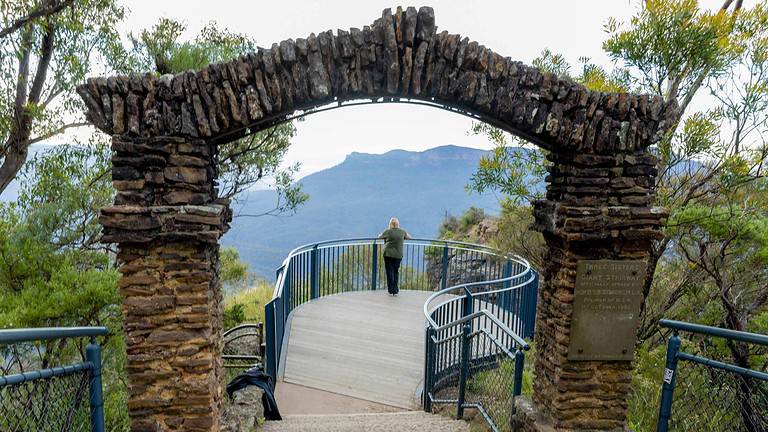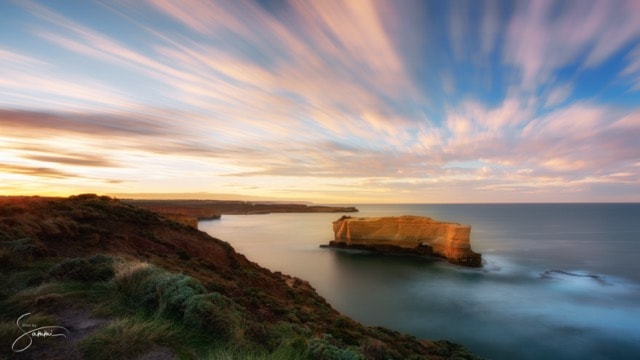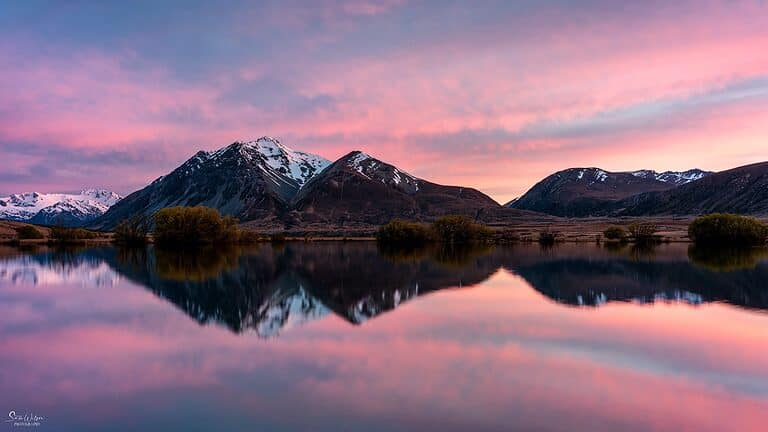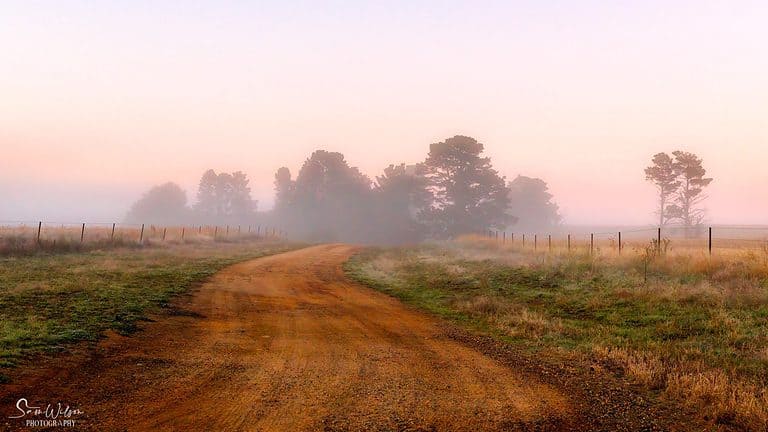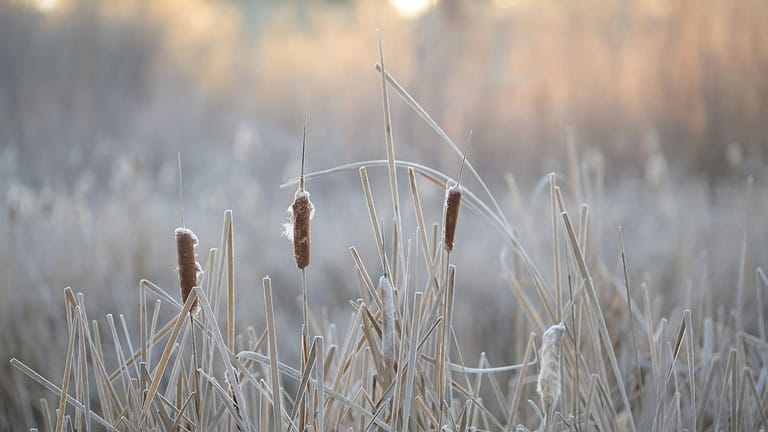Tasmania Photo Locations: 25 Must-Go Spots For Great Photos
This article is all about the incredible Tasmania photo locations you must see and capture for yourself.
From the famous Cradle Mountain and Bay of Fires, to the lesser-known Tarkine and Tessellated Pavement, we will cover them all.
Tasmania may be Australia’s smallest state, but what it lacks in size, it more than makes up for it in its stunning photography opportunities.
From stunning seascapes with clear turquoise waters and white sands, rugged mountains, ancient rainforests to wild coastlines and pristine national parks, Tasmania has an incredibly diverse landscape.
If that’s not an over the top description then you haven’t begun to see the uniqueness of Tasmania – it truly is a photographer’s paradise.
This is the Tasmania instalment of my photography location series. Read to the end to check out the other areas already covered.
But now, let’s get the stunning Tasmania photo locations:
1 – Hobart and Surrounds
You can easily base yourself in Hobart for a few days and check out these locations all within an hour or two of this beautiful harbour city –
Hobart Harbour
The city of Hobart itself is beautiful and has so many photographic opportunities with its narrow, hilly streets lined with 19th Century cottages and colonial architecture.
The waterfront is also brilliant to photograph and sunrise or sunset, oh and night – anytime really. It’s a great spot for capturing reflections, especially around Sullivans Cove.
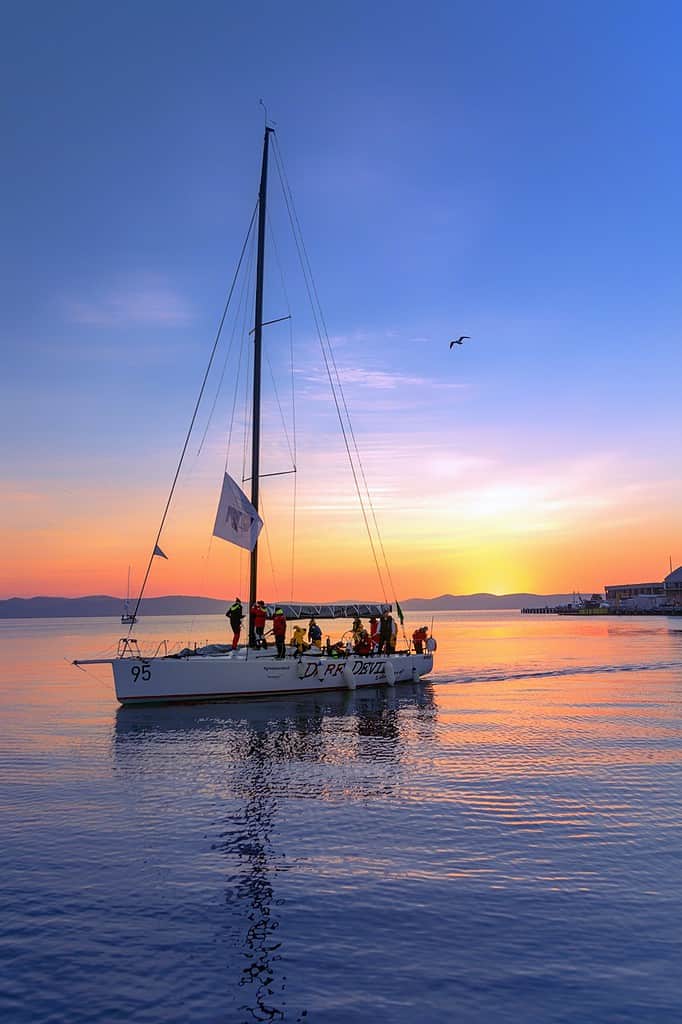
Mount Wellington
When in Hobart, you simply cannot miss the drive up to the summit of Mount Wellington.
At 1270 metres above sea level, you’ll be treated to breathtaking panoramic views of Hobart and its surroundings, including the Derwent River and beyond.
Make sure you bring a jacket for this visit – it can be freezing up here at any time of the year.
If you have time, venture out on some of the many walking trails, it’s not all about the summit.
As usual, the best time to photograph is sunrise and sunset, but it’s also a great location to photograph Hobart at night.
Richmond
Just 30 minutes out of Hobart’s CBD is Richmond.
This quaint little town is home to Australia’s oldest stone arch bridge still in use. Spend some time wandering around as there are many different angles to shoot this fabulous structure from.
It also has some great early colonial style architecture, including some stunning churches that are well worth photographing.
It is a popular destination for tourists and locals alike, so be prepared to be patient to get your shots.
FYI – According to the guide on one of my tours, the bakery also has the reputation for the best scallop pie, a local Tasmanian specialty.
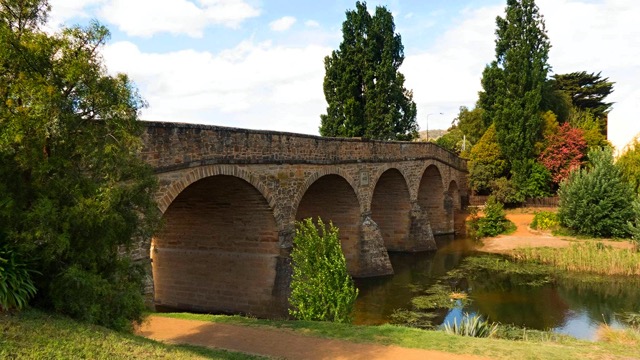
Mortimer Bay
Also around 30 minutes from Hobart is the much less popular Mortimer Bay Reserve.
Head on over at sunset, and when the tide is mid to high for the best photos. The sun should set right in front of you if you’re facing Mount Wellington – and an even better bonus if you get some clouds.
This is a great location to get your filters out for some long exposures.
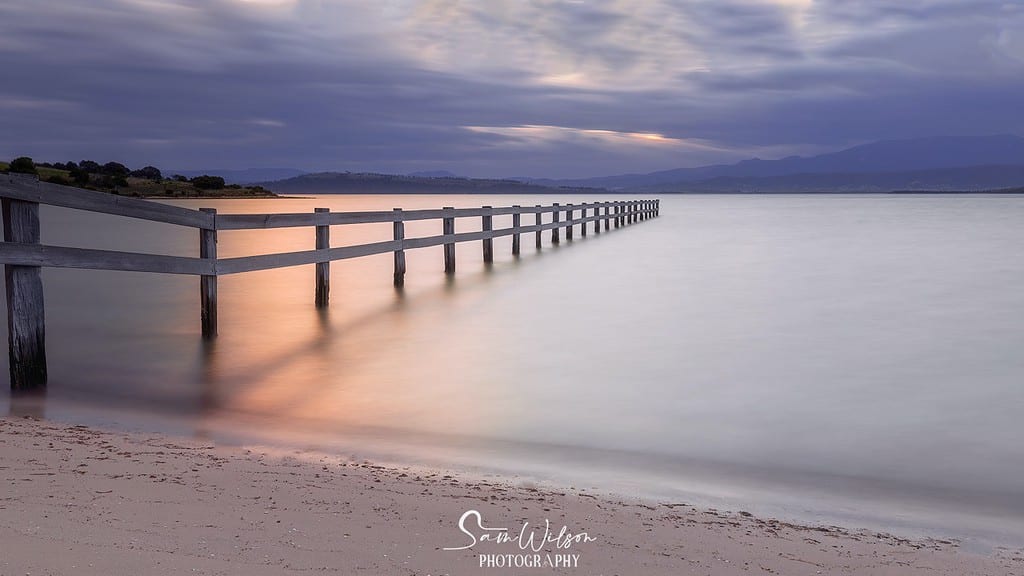
2 – Mount Field National Park – Russell and Horseshoe Falls
Dedicate a day to head out of Hobart to Mount Field National Park. This is only about an hour’s drive from Hobart and is home to two beautiful waterfalls, along with lovely walks through mossy forests.
There are many beautiful photography spots here in Mount Field but the two listed below are easy to access and a lovely relaxing way to spend a day exploring.
Russell Falls
This is possibly the most popular waterfall in Tasmania – not only is it beautiful, but it is an easy and accessible 20 minute return walk through incredibly tall eucalypt trees towering over the mossy forest underneath.
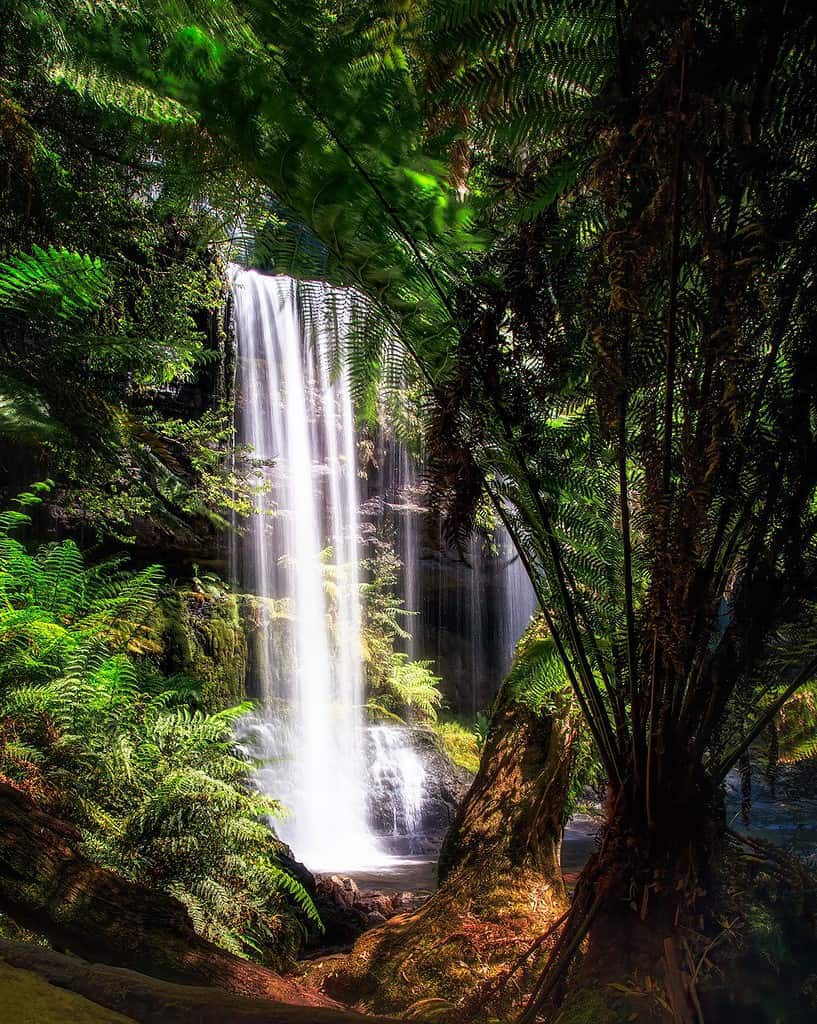
Horseshoe Falls
Another 10-15 minutes uphill will get you to Horseshoe Falls. There is a platform barricading access into the falls themselves, but you can still capture beautiful images.
There will also be less people here as it is that bit more of an effort to get to.
Mount Field National Park is great to visit at any time of the year, but as always for photographing waterfalls, after a bit of rain will give you the best results.
TIP: Keep an eye out for Tasmania’s native fagus trees in autumn for some bonus colourful shots.
The Fagus is Tasmania’s only winter-deciduous native tree and turns all shades of orange and gold in April/May each year.
Fagus is Tasmania’s only winter deciduous species, and one of only a handful of deciduous species in Australia.
3 – Tasman Peninsula
Heading further away from Hobart, south by around 90 minutes will get you to the stunning Tasman Peninsula region.
Home to the incredible Tessellated Pavement, Pirates Bay, Eaglehawk Neck, Tasman Arch, the Devils Kitchen, Port Arthur and so much more, you could easily photograph for days here.
If I had to just pick three though, it would be these:
The Tessellated Pavement
The TessellatedPavement (best photographed at sunrise) is an absolute must for any photography trip to Tasmania, and for good reason.
The tiled rock ‘pavement’ is an incredible sight. It is believed to have been formed by the rocks being fractured by the earth moving, resulting in what is called ‘jointing’. This is not that uncommon, but the years of salt and constant erosion caused by the sea’s waves have resulted in the unusual and stunning location it is today.
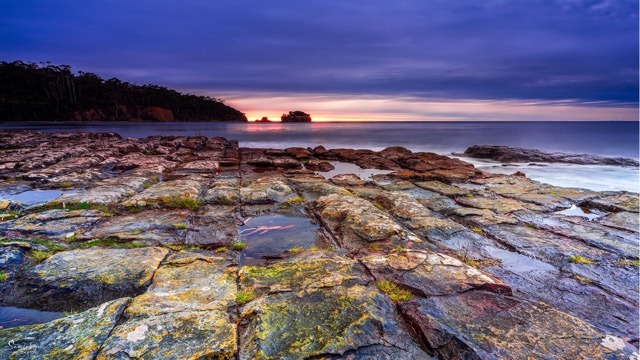
Tasman Arch
This natural wonder is a must-see. It’s only a short walk from the car park and worth it for the stunning coastal views. The impressive geological formation is definitely worth photographing and the power of the ocean churning below is incredible to watch.
Devil’s Kitchen
Just near Tasman Arch is another captivating geological formation to photograph. Watch the raw beauty as you witness the churning waves crashing into the cliffs creating a cauldron-leke effect. The viewing platforms are perfect to photograph from.
Be sure to check out the blowhole while you’re in this area.
Note: The historic Port Arthur really is worth a visit to photograph the well-preserved ruins and to get a glimpse of Australia’s convict history.
4 – Bruny Island
Either continue on from the Tasman Peninsula, or book a day tour to get yourself to Bruny Island if you can.
The island boasts unique geological features, diverse wildlife, and breathtaking natural landscapes, all of which make for incredible photo opportunities.
The narrow sandy isthmus called “The Neck” that joins North Bruny and South Bruny provides a perfect backdrop for landscape photography, with its dramatic cliffs, sandy beaches, and turquoise waters.
The island’s rugged coastline, rolling hills, and lush forests offer endless possibilities for capturing stunning photos.
Guided tours are available, allowing you to explore the island’s hidden treasures and capture the beauty of Bruny Island in all its glory.
I thoroughly recommend Pennicott Wilderness Tours for a great day out.
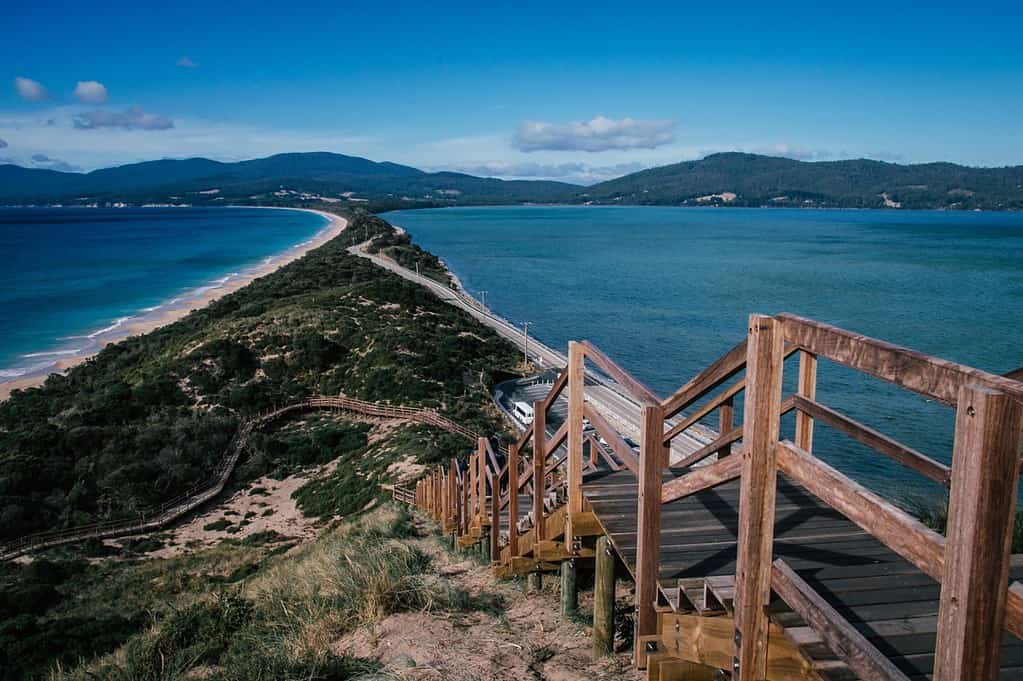
Time to head north up the East Coast …

5 – Freycinet National Park
Freycinet peninsula, which takes in five spectacularly photogenic locations: Coles Bay, Wineglass Bay, Sleepy Bay, Cape Tourville and The Hazards mountain range, is a must for photographer’s and nature lovers alike.
Coles Bay
The features here include the beautiful red lichen-covered rocks that the area is famous for, as well as pristine water. If you’re lucky you may even spot some local wildlife.
Coles Bay is a fabulous location to photograph the Hazards as your background.
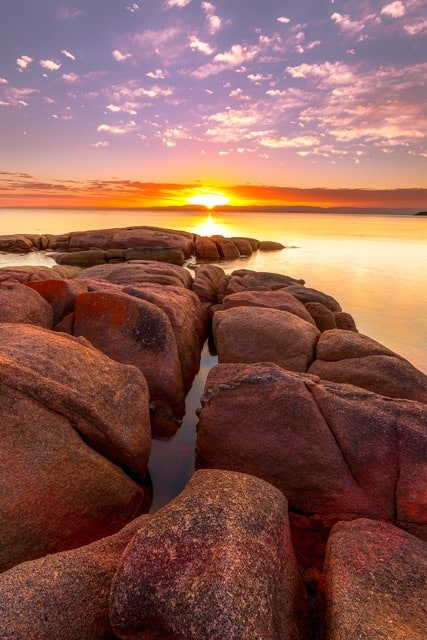
Wineglass Bay
Explore the breathtaking Freycinet National Park with this stunning walk to Wineglass Bay.
This is one of the most popular walks and really shouldn’t be missed.
You have the option to do the shorter walk to Wineglass Bay Lookout, or the longer walk which includes hiking down to the beach.
The lookout offers incredible panoramic views of the bay with its turquoise waters and white sandy beaches.
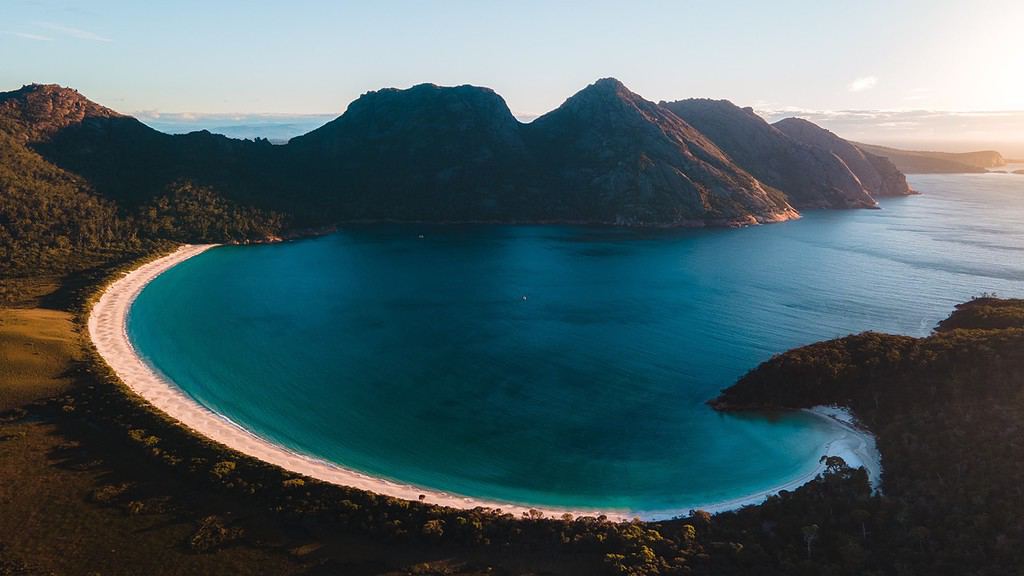
Cape Tourville Lighthouse and ‘The Nuggets’
This picturesque lighthouse overlooks the cliffs and the Tasman Sea, offering great photo opportunities.
Surrounding the lighthouse is a short walking track that takes you around the headland, providing incredible views of the Hazards Mountains, Wineglass Bay and these rock formations known as The Nuggets.
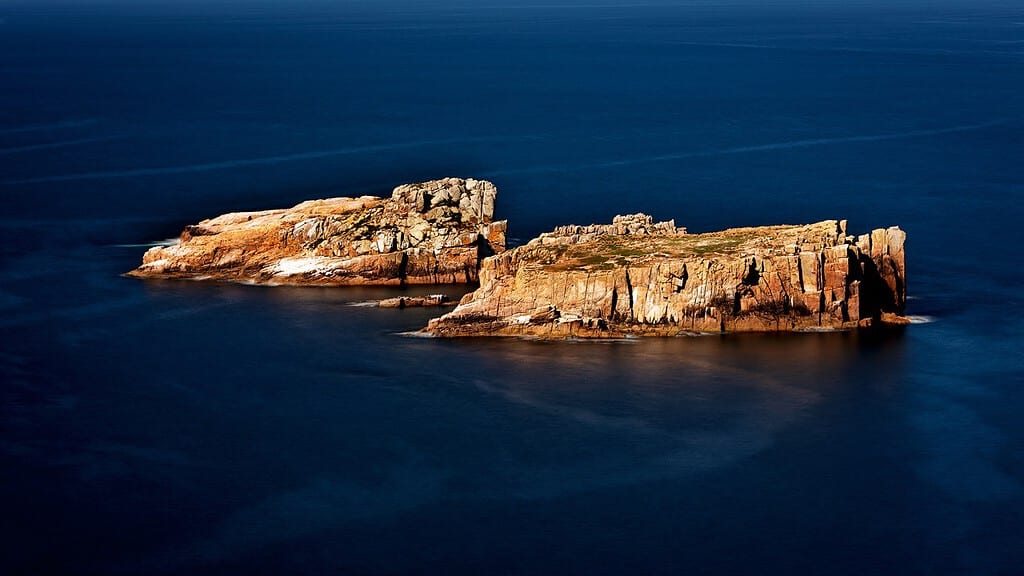
This would be a great location to visit outside sunrise or sunset, so it would make sense to visit before or after one of your trips out to either The Hazards or Coles Bay.
Sleepy Bay
Sleepy Bay is a beautiful rocky bay with turquoise waters and orange lichen-encrusted rocks.

The Hazards
Best photographed from Coles Bay, are the series of granite peaks in a line known as The Hazards.
The rugged peaks and unique geological features of these mountains provide a perfect backdrop for capturing breathtaking photos.
The changing light throughout the day creates a range of moods and tones, making it an ideal location for landscape photographers.
These are best photographed from Coles Bay – sunrise and sunset both work here.

6 – Bay of Fires
Definitely not a secret location, the stunning Bay of Fires area stretches from Binalong Bay in the south to Eddystone Point in the north.
I know it’s been said many times already, but the Bay of Fires is absolutely one of the most beautiful places in Tasmania and a must-visit for Tasmania photo locations.
With fiery orange rocks alongside crystal clear blue water, the contrast is just incredible and makes for some stunning photos!
There are many spots to seek out along this 50 kilometres of coastline, but here are my top three:
Binalong Bay
Pristine white sandy beaches, crystal clear turquoise waters, and stunning natural beauty.
Binalong Bay is often considered the gateway to the Bay of Fires, a famous stretch of coastline renowned for its striking orange-hued granite rocks.
There’s really not much more to say here, except you will want to allow a few days to explore this area.
St Helens is a great place to base yourself in, or you can stay in the smaller Binalong Bay itself.
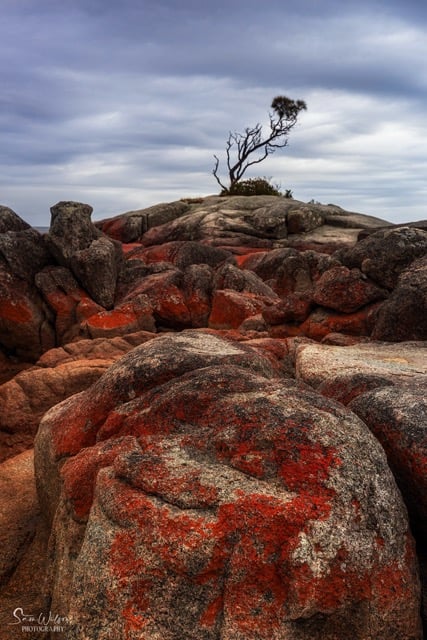
Cosy Corner
Just 15 minutes from St Helens you will find yourself, one of the lesser-known locations (head to Cosy Corner North).
I do hope you’re not sick of beautiful rock formations, white sand, and incredibly clear water, because that’s exactly what you will find here also.

Eddystone Point Lighthouse
The northern end of the Bay of Fires brings you to Eddystone Point that features an incredibly unique lighthouse, along with a lovely picnic area and more stunning coastline.
This is a 35 metre high lighthouse built of granite and beams out 26 nautical miles to guide ships along to avoid the hazards at the entrance to Banks Strait.
Well worth the drive for a visit – and if you’re heading out at dawn or dusk be extra careful with the wildlife you will undoubtedly come across.
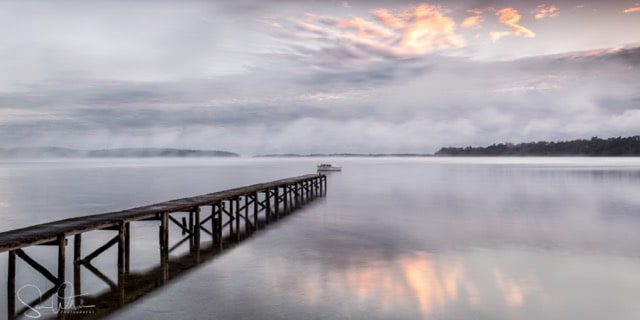
Note: Launceston
If you’re stopping off at Launceston along your travels, be sure to check out Cataract Gorge.
Launceston is the second largest city in the state and is surrounded by stunning natural attractions, including Cataract Gorge, Tamar Valley, and the nearby Ben Lomond National Park.
It is also renowned for its well-preserved Victorian and Georgian architecture, with many historic buildings and landmarks to explore.
7 – North Tasmania
Bridestowe Lavender Farm
If possible, try to time your trip to get to Bridestowe Lavender Farm to capture the beautiful fields of lavender.
The fields of lavender here are just magnificent, and with the mountains in the background, it truly is one of my favourite Tasmania photo locations.
The rows of lavender create stunning leading lines and are just enhanced by the vibrant colours of the lavender. The best time to try and get here is December and January, when the lavender is at its peak.
If you contact the farm beforehand, you may be able to visit after hours to capture sunrise or sunset.
Make sure you check out their gift shop and try their Lavender ice cream as well – surprisingly good!
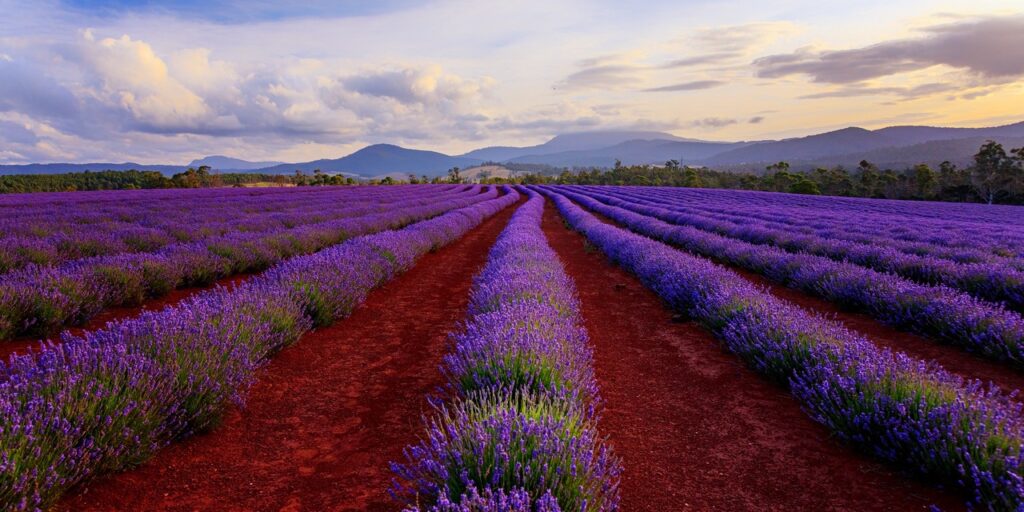
Bridport
Fun fact – Streets in the northern half of Bridport have male person names and those in the southern half have female names.
Enjoy an afternoon visiting Bridport Wildflower Reserve is part of Granite Point Conservation Area, where walking tracks lead through the reserve to Adams Beach. The flower reserve boasts one of the best displays of heath flowers in spring.
Have an early night if you’re staying here so you can capture sunrise at the old jetty before heading to the wilderness of the Northwest.
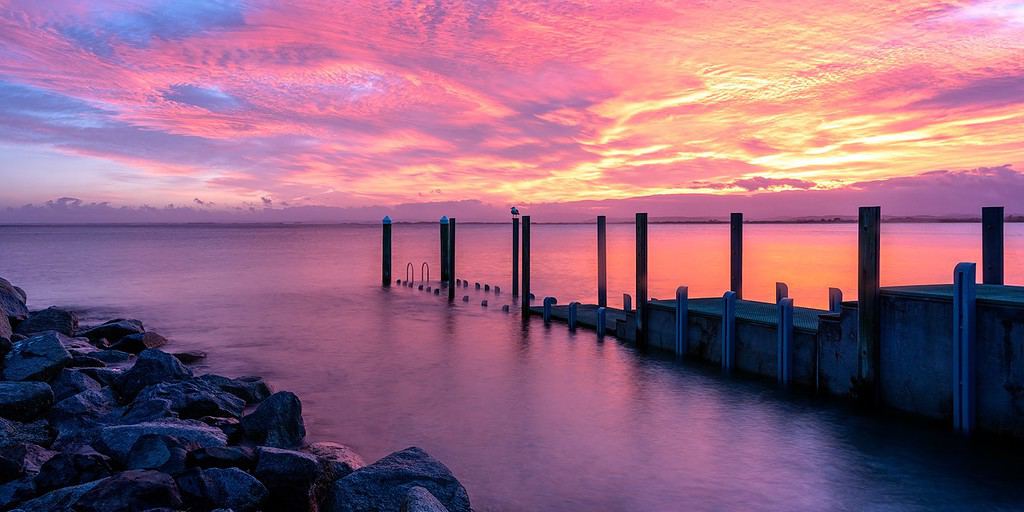
8 – The Tarkine Region
The Tarkine Wilderness is, yes, another dream destination for photographers.
With its vast rainforests, rugged coastline, and unique geological features, the Tarkine Wilderness offers endless opportunities for capturing breathtaking landscape photos.
Whether you’re looking to capture the beauty of the ancient forests or the raw power of the crashing waves against the rocky coastline, the Tarkine Wilderness is a must-visit location for landscape photographers.
There are so many options but if you only have a few days, these are my top recommendations:
Trowutta Arch
The Trowutta Arch Rain Forest Walk leads to a stunning natural geological structure: the Trowutta Arch. Formed by two collapsing cave systems, the arch to one side is filled with water and the other with gigantic Man Ferns.
Needless to say, the walk in and out was in itself so peaceful and enchanting – reasonably flat, you were surrounded by mosses, fungi, ferns, and rainforest canopy the whole way.
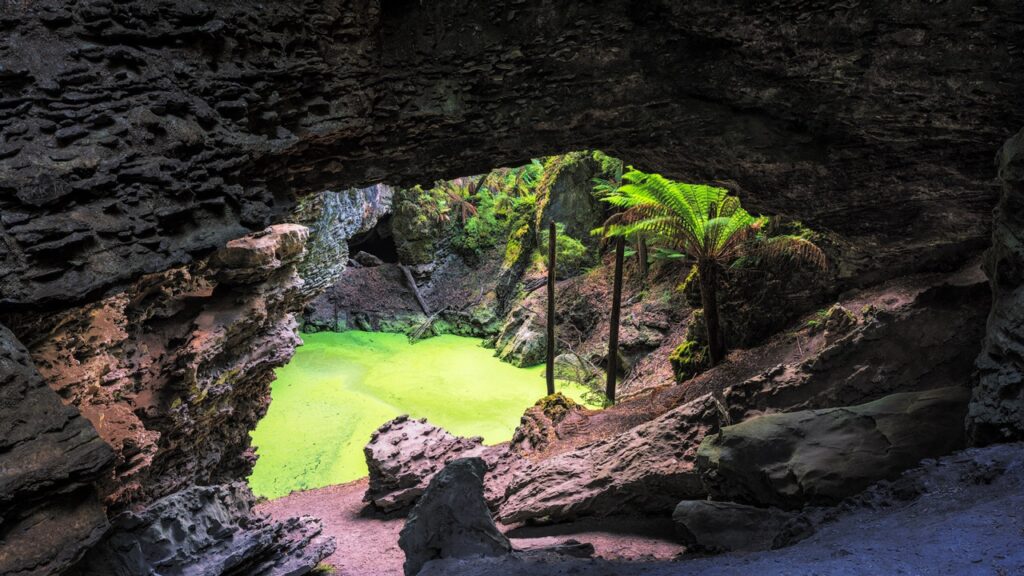
Lake Chisolm
This was another lovely walk, similar to the Trowutta Arch walk but once again we were ‘plagued’ (pun intended) with clear bright blue skies, hence the sky not included in this photo.
A beautiful easy walk with lots of distractions along the way.
Edge Of The World
Gardiner Point is where you officially stand at The Edge of World and view the longest uninterrupted span of ocean on Earth. It’s where the Arthur River meets the sea.
So called because it is the starting point of the longest uninterrupted stretch of ocean in the world. The nearest land is Argentina, a mere 20,000km away.
Dip Falls and The Big Tree
Seriously, who names these things?!?
These were an unexpected bonus for me and the falls were well worth the 240 stairs to the bottom to view.
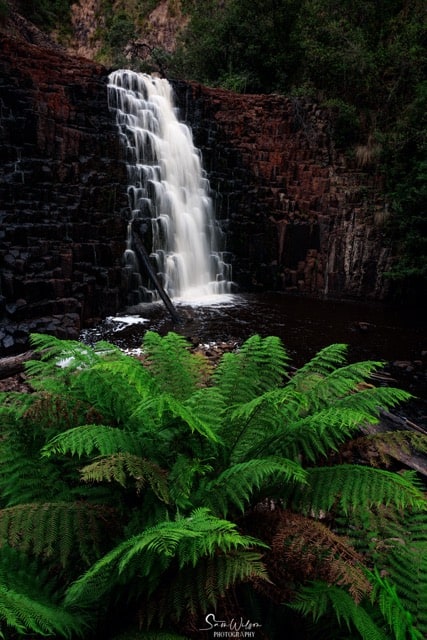
Stanley is the most northern point you can stay and explore in Tasmania’s North West. It’s a lovely little town that is apparently known for its well preserved colonial buildings. To be honest I didn’t really get to appreciate those – on this tour it was all about ‘The Nut’.
Research explains that this is the remains of an ancient volcanic plug with a large, mostly flat surface. You can climb the 152m, or catch a chair lift to the top in the right season.
For the full rundown on this area and the wonderful photo opportunities, head on over to my post covering the area of Northwest Tasmania.
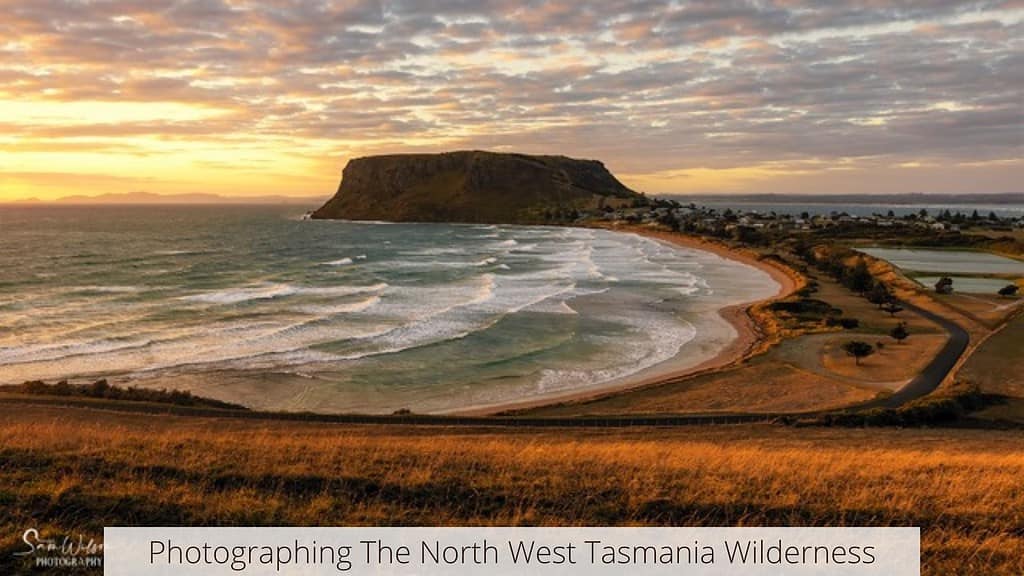
9 – Cradle Mountain
When it comes to iconic Tasmania photography locations, Cradle Mountain is a must-visit.
It’s a heritage listed area, so vehicles are not permitted beyond the visitor centre outside of daylight hours. Check out the full hours and details here.
You will need to park at the visitor centre and catch the shuttle bus to and from Dove Lake, and photograph the iconic boatshed.

The 6-kilometre Dove Lake Circuit is a fantastic introduction to the area and showcase some of the top Cradle Mountain photo spots. It will lead you through the diverse terrains surrounding Dove Lake, offering views of Cradle Mountain the whole way round.
Make sure you stop and photograph Glacier Rock and the gorgeous Ballroom Forest – there’s more than just the boatshed!
It’s also quite likely you’ll get up close with some of the local wildlife. Keep an eye out for the resident wombats, and you might even spot an echidna or two.
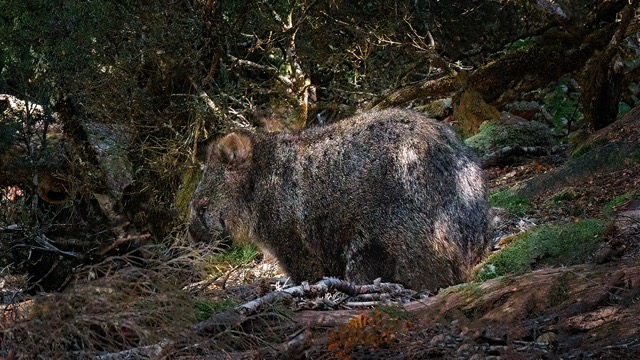
Tasmania is perfect for a road trip and you can easily drive it yourself. Check out this 10 day road trip itinerary that will get you to all of the locations listed in this article:
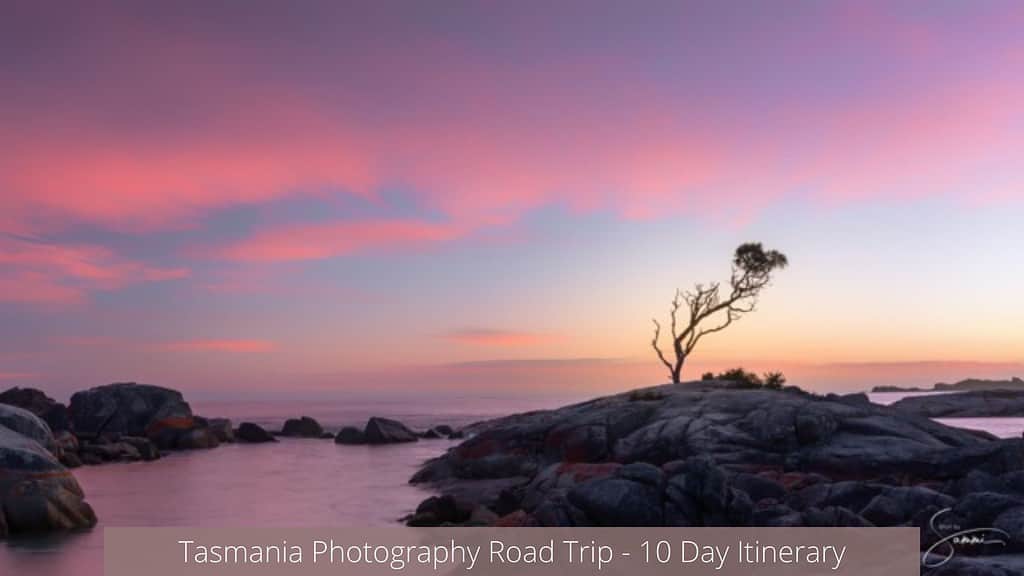
Conclusion
Well that’s it, my top 25 (and it was hard to stop there) Tasmania photo locations that every landscape photographer should try and get to.
From the rugged wilderness of The Tarkine, the beautiful white beaches with its clear turquoise water along Freycinet National Park and the Bay of Fires to the unique geological features of the Tasman Peninsula and Cradle Mountain, Tasmania has so much to offer for every landscape photographer.
I truly hope you’ve enjoyed this post. Let me know in the comments below which your favourite is, or if you have a favourite I’ve neglected to mention.
That’s it for now – Keep clicking and stay caffeinated
Like this post? PIN it so you can save it for later
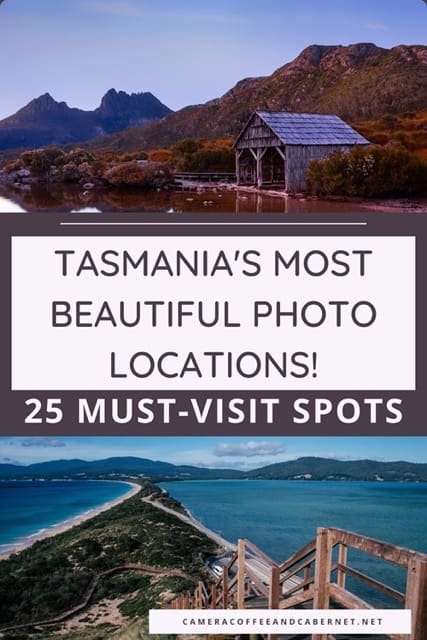
More Photography Location Guides
- North West Tasmania
- Kiama Photography Locations: The Top 10 Spots for Great Photos
- NSW South Coast Photo Spots: The Top 10 Locations for Great Photos
- Blue Mountains Photography Itinerary
- Snowy Mountains Photography Road Trip
- Central Coast Photo Locations
- Great Ocean Road Photo Locations
Don’t miss a post – sign up Here if you haven’t already
Note – Unless otherwise stated, all photos are mine and remain my copyright images – Sam Wilson Photography.
Are you a beginner landscape photographer looking to improve your skills and capture stunning photos of nature?
Our ebook, ‘The Landscape Photography Handbook – Exploring the Wonders of Nature,’ is the perfect guide for you.
With 90 pages of expert advice and practical tips, you’ll learn everything you need to know to capture breathtaking landscapes like a pro.
From essential gear and camera settings to composition techniques and planning your shoot, this comprehensive guide covers it all.
Plus, you’ll discover how to develop your own style, build your confidence as a photographer, and use editing tools to enhance your images.
Get your copy today and start exploring the wonders of nature with your camera!




